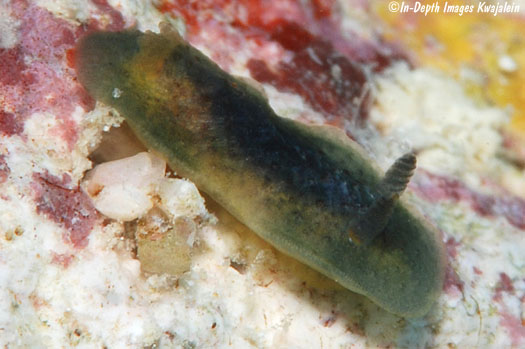
Doris viridis ranges from greenish blue to green to orange in color. It is very similar in size and appearance to Doris pecten, differing externally only in color. See the discussion under D. pecten for characteristics that differentiate the two species. These live under rocks on shallow and intertidal reefs, including large "tide pool" quarries blasted out of the intertidal reef for building materials. D. viridis is thought to feed exclusively on an orange encrusting sponge idenfified by Young (1967) as Prianos phlox. Doris viridis was first reported in the Marshalls from Enewetak Atoll as Doriopsis viridis by Young (1967). We have seen these at Kwajalein and Enewetak Atolls, and John and Lynette Flynn have recorded it from Rongelap.

On 22 February 2009 on a shallow lagoon reef at Kwajalein, I (SJ) spotted the yellow egg mass at left and another, more gray colored egg mass out of the frame, under a rock at a depth of about 5m. Scanning over the rock, I saw the tiny 6mm bluish green Doris a short distance away. I did notice there was none of the blue sponge prey D. pecten is usually found with on this rock at all. I shot a few still images with my video camera and went on my way. Only when processing the images that evening did I notice the yellowish orange nudibranch on the yellow orange sponge barely a nudibranch's length away. This was the first time we realized that this species could take on an orange color form that pretty closely matches the color of their prey sponge.
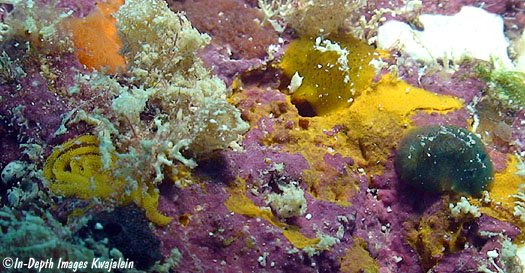
A closer view of the two nudibranchs.
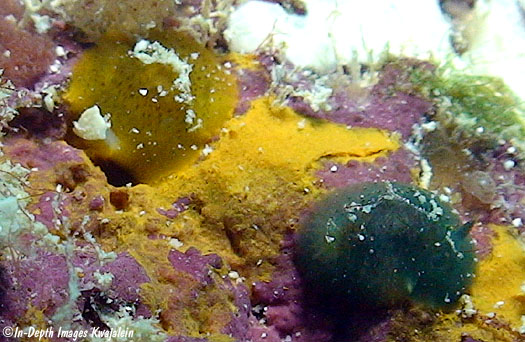
A pair of Doris viridis specimens found on 31 December 2010 is shown below. Two nudibranchs, one greenish and one blue, were under a dead disk of Fungia coral along with an egg mass. The egg mass does not really seem to match those of D. pecten from Enewetak. A comparison of egg masses from similar sized specimens is on a separate page.
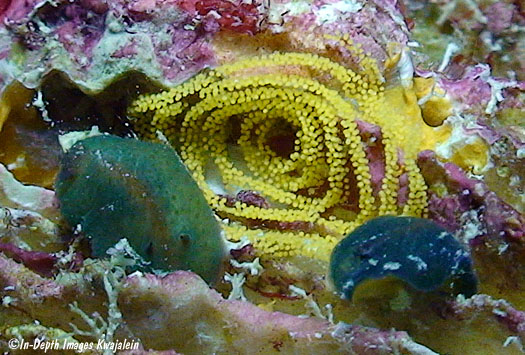
Several specimens found by Christina Sylvester (next three photos) in Kwajalein reef quarries also show color variation, but might throw some doubt on differences in prey sponges. The distinctly greenish yellow specimen below appears to have been eating the blue sponge preferred by D. pecten.
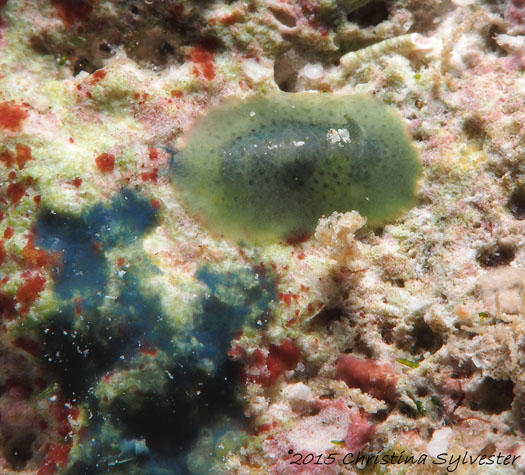
This cluster of three shows three distinct color forms, all apparently eating the orange sponge of D. viridis.
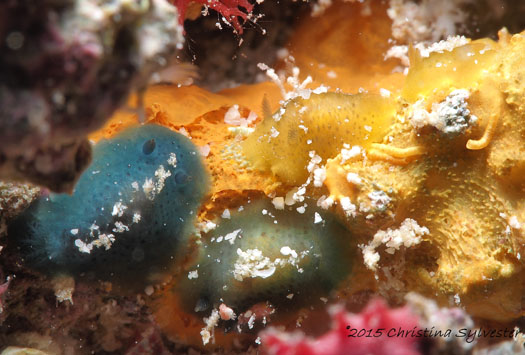
Nearby was another pair of distinct orange and bluish green forms.
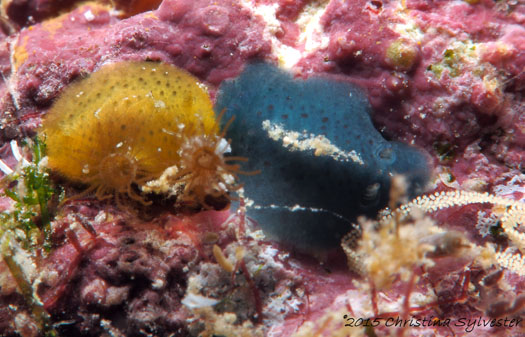
Created 11 December 2006
Updated 3 May 2021